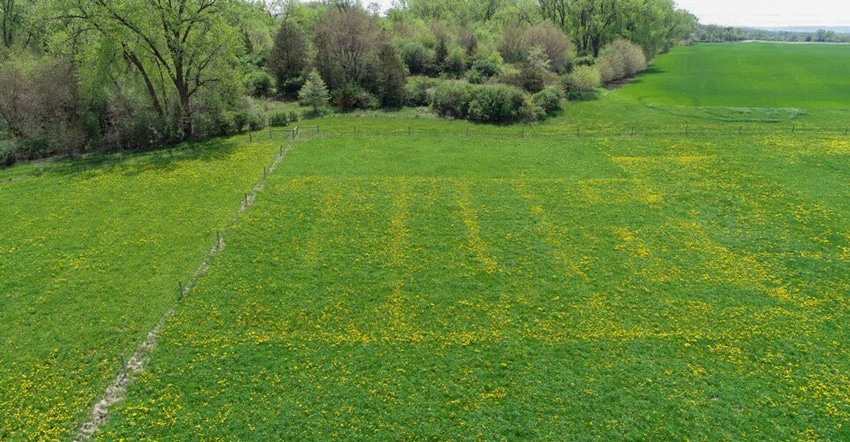August 21, 2020

It may be tempting to leave animals out on pasture in the fall. The animals like it, and you decrease manure handling. But leaving pasture species with at least 4 inches of residual sward height (around the height of a can of vegetables) is vital for winter survival of desired species and spring production in 2021.
Is getting an extra week of grazing now worth the potential decrease in forage quantity and quality production in 2021? Are you willing to put in the money, time and labor to fix the unintended consequences?
Impact of overgrazing
In a recent survey of organic pastures in Wisconsin, just over 50% of rotational graziers left less than the recommended 3 inches of residual sward height at the end of the grazing season. Leaving enough residual is important for the plant to capture solar energy and regrow for the next grazing event.
Although maintaining adequate residual is vital year-round, it is particularly important at the end of the grazing season, so that desired species can replenish depleted carbohydrate energy reserves held in the roots to survive the winter and pop up quickly in the spring to outcompete weeds. A little bit of foliage is necessary for capturing solar energy before the frost.
Maintaining desirable species in pastures is essential for not only the amount of forage produced, but also the quality of forage produced and your bottom line. Quality and quantity of forage are both vital for milk production and weight gain. Common perennial grass and legume species that are sensitive to winterkill include Italian ryegrass, perennial ryegrass, tall fescue, and red and white clover.
The importance of legumes should never be downplayed! Pastures should have at least 30% legume cover. Legumes provide crude protein and palatability for the animals, and can fix atmospheric nitrogen for the soil and other pasture grass and forb species.
A research study done in Prairie du Sac, Wis., looked at grazing portions of pastures seeded with different grass species to ¾-inch, 3-inch or 6-inch residual height throughout the year. The following year, the 6-inch residual paddock was ready to graze two weeks earlier in the spring compared to the ¾-inch residual and one week earlier than the paddocks grazed to 3-inch residual.
Meadow fescue, quackgrass and reed canarygrass had decreased persistence when grazed to a shorter residual height during dry years of the study. The creation of bare soil from winterkill or overgrazing creates a seedbed for weed species that can compete with desirable forage species and be unpalatable to livestock.
Grazing cover crops
Still not convinced to take the animals off pasture? More and more producers are fencing off cropland and grazing cover crops that were interseeded into corn or established after a summer-harvested crop such as wheat. This creates a great opportunity to get manure on crop land while providing erosion and soil health benefits to your soil — your most important resource! Check in with your local Extension educator, Natural Resources Conservation Service office or producer-led watershed group for potential cost-share opportunities and guidance.
As always, there is an exception to the rule. Overgrazing some paddocks in the fall is a useful management strategy if a grazier is interested in renovating the existing pasture. Renovation is often cheaper and less risky than complete termination and reestablishment of a pasture. The disadvantages of overgrazing, such as bare ground and slow spring growth, suddenly become advantages for establishing new species.
Usually new species seeded into an existing pasture have a disadvantage. They have no established roots and must compete with established plants for water, light and soil nutrients — and they don’t stand a chance. If one plans to no-till drill or frost-seed any species in the spring, overgrazing in the fall will allow the new species to get established while the existing sod recovers. The bare soil left behind by the winterkill of some species is a positive in this sense, as it increases seed-to-soil contact.
So, leave at least 4 inches of residual or less than 1 inch, but not in between, and know your plan for 2021 before you decide.
Zegler is the Extension crops and soils educator in Dane County, Wis.
You May Also Like




